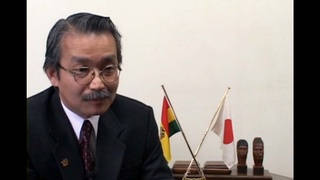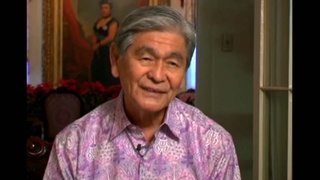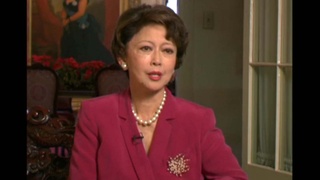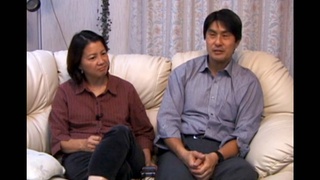Interviews
Image of Americans
Their image of an American was Caucasian or non-Asian. So to meet an Asian American, especially a Japanese American, for them was…where do you categorize? How do you fit this person in into their idea? So I probably have changed that idea for a lot of people who have met me. But it also made me aware of being both – that I’m neither one nor the other. I am both. And so for many Japanese, they go, “Oh, does that mean your mother is American?” I said, “No, my father is American, too.” That kind of throws them. “But you have a Japanese name.” I said, “Yes, because my father and my mother are ethnically Japanese, but their nationality is American. They were born and raised in America.” So that sort of opens a lot of conversation. It has also made me aware of, in some ways, how Western I am, as opposed to Japanese. But, at the same time, I guess growing up in Hawaii, being both was not unusual. You study Japanese, you practice certain Japanese customs – that was not unusual. But for a Japanese here, it’s unusual. It’s like, “How do you do both?” And it’s not doing both, it just naturally occurs. So at one time, it’s like the students or even the teachers would say, “So, which side of your family…does that make you half?” I said, “No, it doesn’t make me half. I’m 100 percent American because that’s my nationality. But I’m also 100 percent Japanese because all my grandparents originally came from Japan. So I’m not half as much as I’m maybe 200 percent.” And so for them, it’s like a whole different concept.
Date: November 8, 2003
Location: Tokushima, Japan
Interviewer: Art Nomura
Contributed by: Art Nomura, Finding Home.
Explore More Videos

Grandmother's influence on decision to go to Japan
(b.1942) Japanese American ceramist, who has lived in Japan for over 30 years.

A Possible Path towards Happiness… (Spanish)
(1958-2014) Former Bolivian Ambassador to Japan

Being fair
(b.1926) Democratic politician and three-term Governor of Hawai'i



What is Nikkei? (Japanese)
Tsuda College President, researcher of Nikkei history

Learning from Nikkei (Japanese)
Tsuda College President, researcher of Nikkei history

Nickname
(1926 - 2012) Scholar and professor of anthropology. Leader in the establishment of ethnic studies as an academic discipline

Context affects meaning
(1926 - 2012) Scholar and professor of anthropology. Leader in the establishment of ethnic studies as an academic discipline

Testing assumptions of Japanese scholars
(1926 - 2012) Scholar and professor of anthropology. Leader in the establishment of ethnic studies as an academic discipline



1920 labor strike
An expert researcher and scholar on Japanese immigrant clothing.


Bombing of Pearl Harbor
An expert researcher and scholar on Japanese immigrant clothing.
